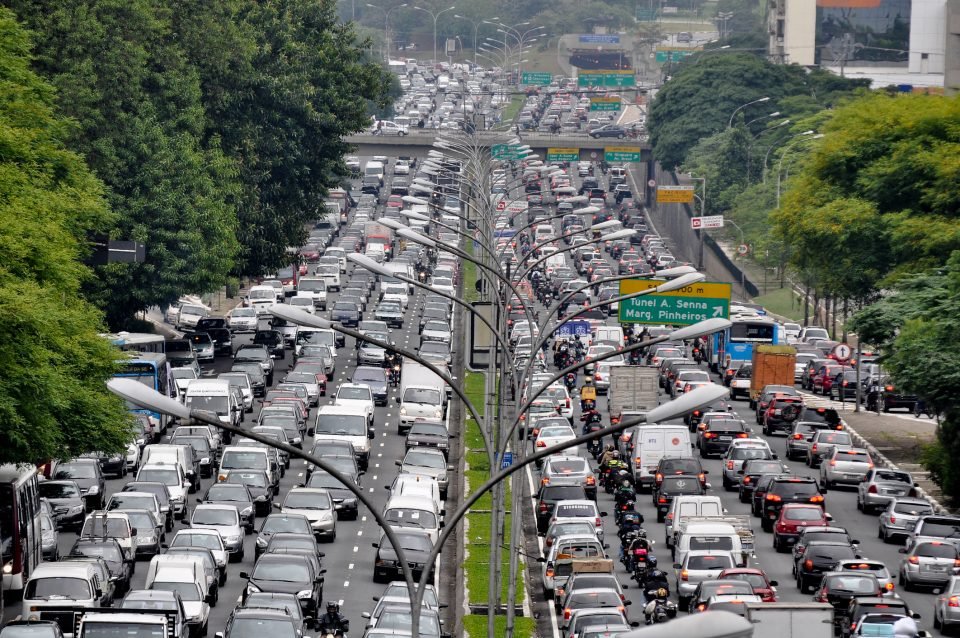Traffic congestion has one of the most prominent challenges for major cities anywhere in the world. Growing urbanization and population only accelerate traffic challenges. Therefore, it is essential to leverage technology to be useful for traffic congestion management. Solutions that can solve the city’s common problems fall under the category of smart city solutions. Traffic congestion management would result in better productivity and growth of the residing people. Eventually, better traffic management would result in benefits beyond just convenience & quality of life.
Implementation Of Traffic Congestion Management For Smart Cities
Acquiring accurate traffic statistics is the first step for a technological solution to manage traffic. Technology is now more reliable than ever to work on such a distributed network systems. Wireless sensor networks and a variety of wireless communication provisions play a vital role in traffic congestion management solutions. Thorough and careful distribution of sensor networks is critical to get real-time statistics. These statistics allow authorities to map routes and mitigate any roadblocks properly. Thus, monitoring the ways and vehicle presence is the first step towards traffic resolution.
Leveraging Wireless Sensors For Real-Time Insights
Implementation of the correct sensors on the appropriate reference points is the first step towards accurate insights. Identifying the populations or free roads can help authorities to optimize traffic allocation. However, wireless sensors are the only suited option most of the time. It is because installation of wired sensors comes at the price of infrastructure works of burying. Such infrastructure work might end up creating road clusters and might even defeat the purpose of traffic congestion. In comparison, wireless sensors are easier to install, offer mobility, and can be deployed instantly. Some sensors that detect vehicles include ultrasonic sensors, IR sensors, Gas detection sensors, or even weight sensors.
Furthermore, there are several choices for the type of sensors in traffic management systems. Some of the sensors just count the number of vehicles simply. At the same time, other sensors could result in both the identification and count of vehicles. Such further insight would allow transportation authorities to identify the pattern of vehicles running on those roads. In addition to wireless sensors, cameras with edge processing or cloud connectivity can also serve the purpose. Cameras would allow OCR (Optical Character Recognition) & AI (Artificial Intelligence) to identify particular vehicles along with their registration information.
Role Of Internet Of Things & Networking In Traffic Congestion Management
Internet of Things is an integral part of most smart city solutions. Traffic congestion management is no exception to those smart city solutions. Traffic congestion management relies on IoT being a distributed solution through different parts of the city. More often, a group of sensors installed at a particular site transmit their data to a gateway. These sensors communicate to the gateway with long-range communications. Some examples of these long-range protocols include Zigbee, Z-wave, Wi-Fi, and LoRaWAN. Various sensors communicating to a single gateway would create one topology.
There will be many network topologies communicating with the cloud throughout the city. As such, gateways from various areas upload their data to the cloud through a communication medium such as 5G, NB-IoT, LTE, etc. While cellular communication is popular among the other choices, sometimes, robust alternatives such as satellite communication can also be leveraged.
Accessible Web Dashboard
Web dashboards are also an essential part of the traffic congestion management system to represent data collection. The collection of data is generally represented graphically. They are allowing the user to monitor those statistics on the real-like digital road mapping easily. As a result, traffic authorities can get a clear idea of traffic congestion in an instant without any analysis or arithmetics.
Summary
Urban traffic is one of the most common problems that everyone can relate to in their daily lives. Therefore, it is critical to ensure that we have a technological solution that is scalable for the future to come. The study of routes, origins, and destinations can be insightful to diver traffic and optimize existing infrastructure. In addition to that, Instant access to real-time information will enable traffic administrators to understand user needs and propose the right alternative solution. Solving the urban traffic will empower the city residents with unprecedented comfort and productivity. Therefore cumulatively impacting human lives for betterment in general.
Develop great IoT solutions for intelligent Smart Cities with high quality software, devices and infrastructures. Contact us!


